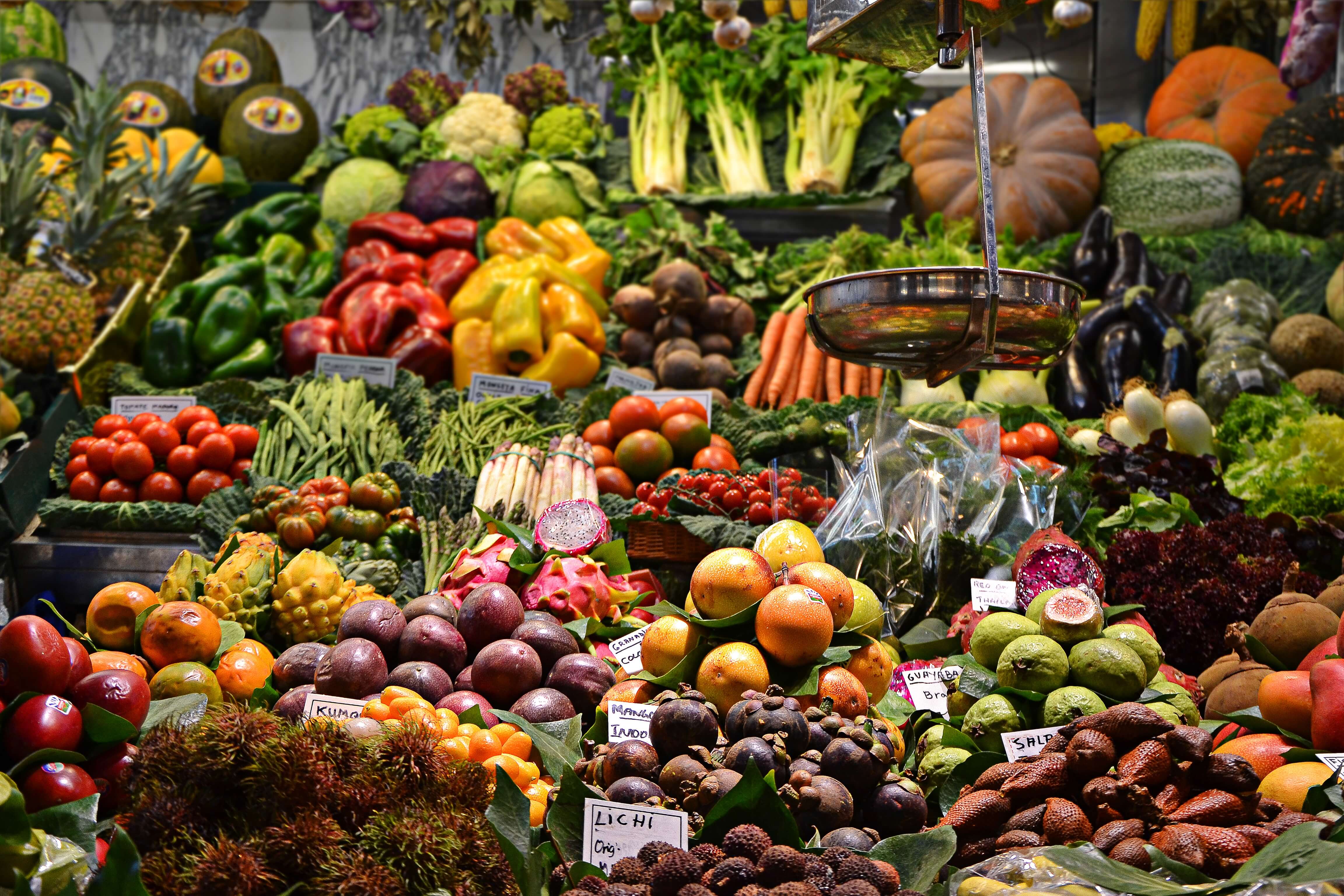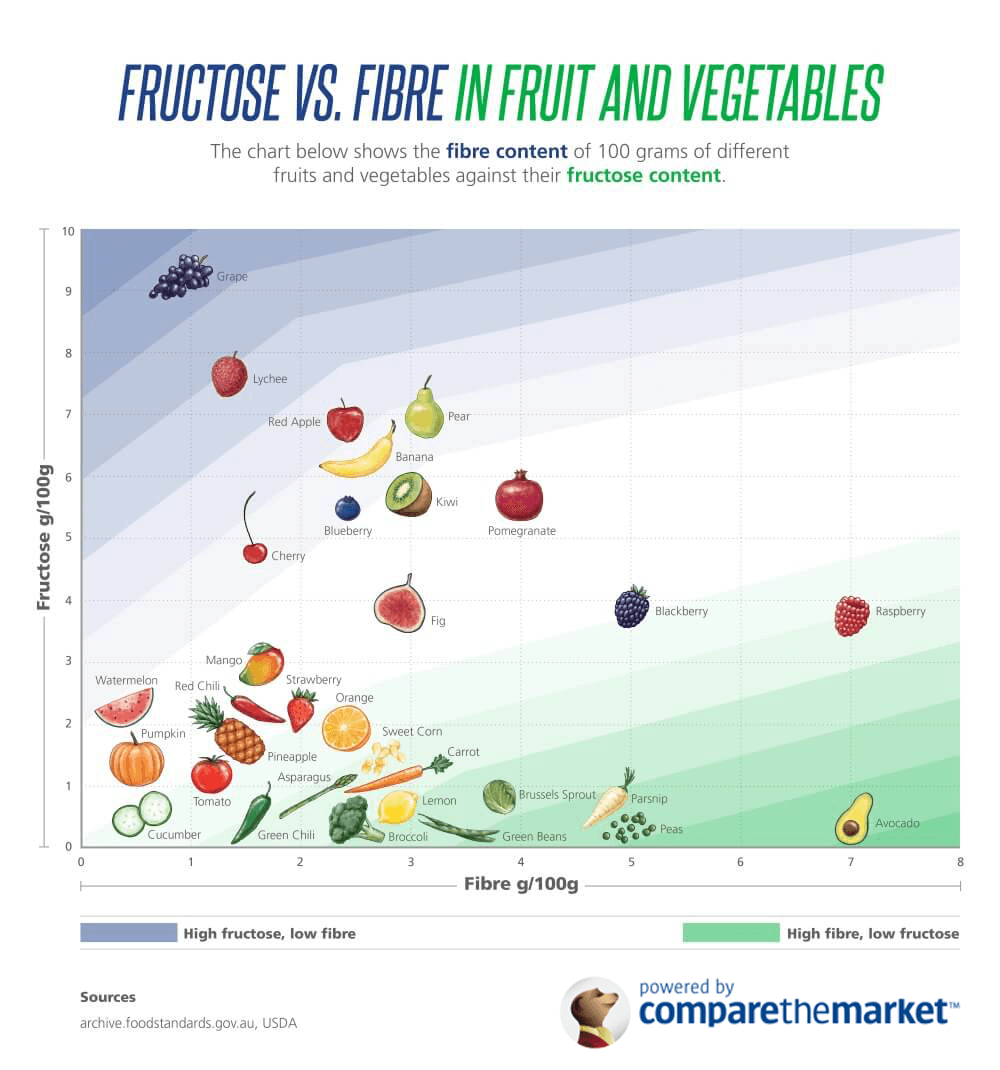
Most of us grew up hearing we needed to eat more fruits and vegetables. But now, some recent research warns us to stay clear of certain fruits and vegetables—more specifically, those with high natural sugar content.
Even still, others continue to tout the benefits of such fruit in our diets. This paints a confusing picture and leaves a lot of questions about what we should eat, what we should avoid, and how much is healthy.
Let’s take a closer look by examining the main components of fruit and vegetables in question: fructose and fibre.

What is fructose?
Fructose is a simple sugar, about 1.2 times sweeter than table sugar, which occurs naturally in fruits and certain vegetables and gives them their sweet taste. Fructose has also been used to sweeten packaged products like sodas, canned goods, and processed foods.
Naturally occurring fructose is one of the three simple sugars our bodies use as fuel.
What is fibre?
Dietary fibre is the part of plant foods that can’t be digested or absorbed by the small intestines. All fruits and vegetables in their natural forms contain varying degrees of soluble fibre.
In our bodies, fibre passes through as “roughage” into the large intestine and is fermented by bacteria in the gut. This process and its by-products are the reasons dietary fibre plays an important role in a healthy diet:
- Speed up gut transit time, reducing the risks of bowel related diseases and colon cancer
- Protect against heart disease by improving blood lipid profiles
- Control blood glucose levels by slowing the absorption and digestion of carbohydrates
- Manage weight and reduce appetite (since fibre provides bulk without added calories in the diet)
So, is fructose safe to eat?
Most experts say yes—for the most part. Robert Lustig, a paediatric endocrinologist known as being the “antisugar guy,” even agrees that the health benefits of fibre in fruit generally offsets any negative effects of fructose. However, Lustig has one exception: grapes, which he says don’t have enough fibre to offset their sugar content.
According to the Australia New Zealand Food Standards Online Searchable Database, grapes have a fructose content of 9.2g per 100g versus a fibre content of 0.9g per 100g.
As you can see from the chart, grapes show up at the high left, which means a high-fructose count versus the amount of fibre. For someone trying to reduce fructose, fruits in this area may be best consumed in moderation.
Other high fructose fruits include:
- Mangoes: 2.7g fructose, 1.6g fibre
- Bananas: 6.2g fructose, 2.6g fibre
- Cherries: 4.7g fructose, 1.6g fibre
If you’re trying to reduce the amount of fructose in your diet, you might focus on fruits in the middle- to bottom-right section of the chart—those with lower levels of fructose versus higher fibre counts.
Other low fructose fruits include:
- Raspberries: 3.8g fructose, 7g fibre
- Blueberries: 5.5g fructose, 2.4g fibre
- Kiwi: 5.7g fructose, 3g fibre
- Grapefruits: 1.8g fructose, 2g fibre
- Honeydew melon: 1.9g fructose, 1g fibre






